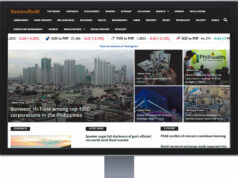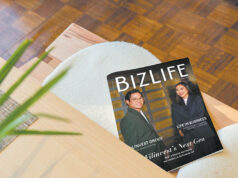Museums in the Philippines: Looking forward post-pandemic

By Jeremy R. Barns and Jorell M. Legaspi, National Museum of the Philippines
MUSEUMS are keepers of memories. Over centuries, vast collections and archives have been gathered to record and preserve fragments of history in an attempt to capture an essence of society, nature, and cultural heritage.
Memories, however, fade over time and even the most robust of tangible evidence may never be enough to tell a complete, or at least a convincing, story. This poses a constant challenge for museums in the age of information, as well as a great opportunity to transform their relationship with their growing audiences.
By embracing the major shifts in our collective consciousness and the power of participatory approaches, museums can continue to harness their relevance, especially in the near post-pandemic future.
By providing access to collections and archives, thus a wealth of bodies of knowledge, museums can facilitate learning and understanding of our artistic, cultural or natural heritage, but only to an extent.
At the National Museum of the Philippines, we take our functional mandate as an educational and cultural institution very seriously. The concept of “universal access” bears the tremendous responsibility of ensuring inclusive, fair and accurate representation in today’s highly inquisitive environment. In terms of exhibitions and other means of display and dissemination, it is not enough that ideas are conveyed without considering the multiplicity of perspectives and the humanity of dialogue and discourse.
Thus, connecting emotionally with audiences improves the retention of knowledge and skills, and the development of a more profound and informed sense of self. These are demonstrated through exhibitions that situate viewers in an active participant capacity, in control of their own tactile exploration and critical questioning. This transformative impact of museum learning has become more evident in recent decades, as museum practices shifted from verbally driven conventions to more embodied and immersive experiences, making interpretation more than just a process of thinking but of feeling.
In 2020, the COVID-19 pandemic quickly changed the game for many public spaces and venues, resulting in the longest closure of cultural institutions since World War II. More than 10% of museums, especially those reliant on their income-generating functions, may never open again. For the more resilient of institutions, this change of pace offered an opportunity to “see” often-overlooked aspects of museum operations and to reset their approaches. Such realignment has given rise to new trends in information and communication technology, space architecture and design, urban planning and place-making, and customer journeys.
As with many local museums, we at the National Museum of the Philippines faced many new challenges of our own too. Despite our confinement, we worked hard in rethinking ways of fulfilling our core functions and mandates, developing new strategies to sustain our relationship with our audiences and their connection with our exhibitions and programs. While our physical spaces took a break from operations, we learned to harness virtual and online platforms in delivering programs that helped foster conversations and learning about our cultural heritage, all within such a new and unique context. We produced more digital and online content than ever before, even launching our new website which offers access to virtual tours of our central museums and a selection of free publications.
While we eased into normal museum operations in our Rizal Park Complex in Manila starting late 2021, our visitor numbers jumped from about fifty thousand in April to over one hundred thousand in May this year, sparked by a message that went viral on social media. Since then, swarms of visitors, young and old, have been patiently lining up in front of our doors.
We also noticed more visitors claiming the museums’ indoor and outdoor spaces to create content for Instagram and TikTok, indicating that we provide a special vibe and inspiring environment that attracts young content creators, a generation bent on conveying their “aesthetic. One young visitor said he would often come to the museum with a few changes of clothes to create images of “museum-going fashion.” These encounters demonstrate that museums really do occupy a special space between learning and recreation, challenging the sector to provide experiences that could open layered entry points for different kinds of people. This is just a portion of the audience-led environment in which museums operate in a hybrid-accustomed post-pandemic world.
While we gained digital experience and confidence, we remembered to love and appreciate our physical spaces even more, especially in the many regions of our country that are struggling with internet connectivity. These imbalances in access factor very strongly in everything we do, encouraging a fully holistic direction in the way we ideate and develop exhibitions and programs for our several regional, area and site museums.
We rely on interdisciplinary collaboration and input from our various curatorial and research divisions, as well as consultations with local communities, drawing out as many perspectives and connections as we possibly can — a key approach the National Museum of the Philippines has always been very proud of. Most of these projects are being rolled out this year, with tremendous support from local government stakeholders and community partners, who will all play an important role in promoting and activating these exhibitions as platforms for capacity building and appreciation of our unique and wonderful heritage.
In carefully navigating the road to recovery from the COVID-19 pandemic, museums should be open to transformation and commit to being exemplars of collaborative community-based practices and dedicated custodians of spaces where we could all hone and appreciate imagination and creativity, our tangible and intangible heritage, celebrate our rich Filipino patrimony, and express the many different versions of ourselves.
Jeremy R. Barns and Jorell M. Legaspi are director-general and deputy director-general for museums, respectively, with the National Museum of the Philippines.



